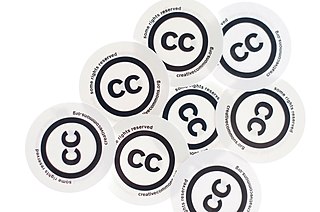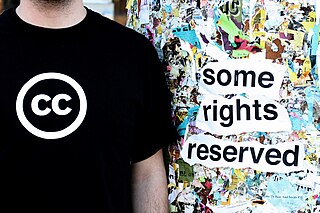Learning in a digital age/LiDA103/Creative Commons/Basics
If you own the exclusive rights to a property, as the owner you may decide how that property is used. For example, you may give permission to someone to use your car or to stay in your house. In the case of copyright, the owner holds the exclusive rights to copy, distribute and adapt an original creative work, including the economic rights associated with the work. Similarly, a copyright holder may give permissions regarding these rights. Creative Commons provides the legal tools that help authors manage their intellectual property rights and permissions associated with their creative works.
The copyright holder, as the legal owner of the rights associated with copyright can therefore give advance permissions regarding use of the work. This is enabled through the transfer of rights by applying a copyright license.
Refine your copyright
Creative Commons provides the creator with a spectrum of choices resulting in a "some rights reserved" approach through to "all rights reserved" copyright. Traditional "all rights reserved" copyright grants the creator exclusive rights to his or her work, which restricts others from copying, distributing and/or adapting the work without permission.
Think of Creative Commons as a tool which enables educators to create and share creative works based on a culture of giving permissions rather than a culture of imposing restrictions by default.
As a rights holder of your own work, you have the freedom to choose the most open license which gives others the permissions to copy, distribute or modify your work as long as they credit you for your original work. It is also possible to specify additional conditions for using your work by selecting different license terms.
From "all" rights reserved to "some" rights reserved
Creative Commons is a non-profit entity dedicated to realizing the full potential of the Internet — universal access to research, education, full participation in culture, and driving a new era of development, growth, and productivity. Universal access to education is possible, but its potential is hindered by outdated copyright laws and incompatible technologies. Creative Commons works to minimize these barriers, by providing licenses and tools that anyone can use to share their educational materials with the world. CC licenses make textbooks and lesson plans easy to find, easy to share, and easy to customize and combine — helping to realize the full benefits of digitally enabled education.
In summary, CC licenses and tools give everyone from individual creators to large companies and institutions a simple, standardized way to keep their copyright while allowing certain uses of their work — a “some rights reserved” approach to copyright — which makes their creative, educational, and scientific content instantly more compatible with the full potential of the internet. The combination of CC licenses and tools in the hands of users makes possible a vast and growing digital commons, a pool of content that can be copied, distributed, edited, remixed, and built upon, all within the boundaries of copyright law.
Acknowledgments
Text adapted from http://creativecommons.org/about and http://creativecommons.org/education

